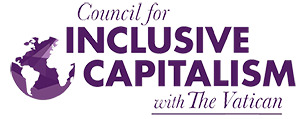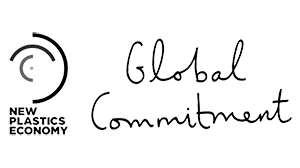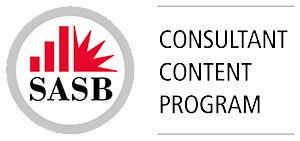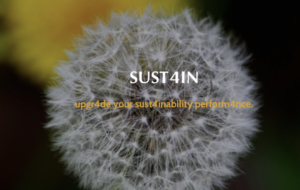Sustainability in 2017 – Looking back

Sustainable Development Goals
- Business and the financial sector increased – well above expectations – the strength, scale and pace of the support to the SDGs in 2017.
- The SDG Business Forumwas held for the first time at the famous and humbling UN General Assembly Hall at the UN HQ in New York. 1,500 business leaders, from Aviva to Veolia, attended the forum. Our founder, Marcio Viegas, was there and wrote this article immediately after the meeting.
- In September, also in New York, the United Nations Global Compact organized its Leaders’ Summit 2017. “We have less than 5,000 days to meet the SDGs and less than 1,000 days to fix climate change”, said Lise Kingo, Executive Director o the Global Compact.
- On 26 September we organized the SDGs Two Years On conference, with Paul Polman, CEO, Unilever and Chairman, WBCSD, Prof. Jeffrey Sachs, UN Special Advisor and various companies and others.
- At SUST4IN we kept pushing ourselves to evangelize and train companies and other organizations on the SDGs opportunities, in English and now in Spanish: on 21-22 November we organized the first public course SDG For Business in Spanish. The next session is on 21-22 March 2018. Marcio Viegas has also published an article on how to budget for the SDGs: Budgeting for the Sustainable Development Goals: tactics and resources.
Sustainable Finance
- In May we organized, with ICEX, the II (Joint) Climate Finance International Conference: Green Bonds and other Innovative Instruments, with Nicholas Pfaff, ICMA and Secretary of the Green Bond Principles, Michael Wilkins, S&P and member of the Task force on Climate-related Financial Disclosures and others.
- Green Bonds comfortably passed the $100bn threshold, as we had (easily) forecasted.
- The Economist, the Financial Times and McKinsey all covered sustainable finance news: from mainstreaming to spreads on green bonds.
Climate Change
In October we learned that the concentration of carbon dioxide in the atmosphere increased at record speed in 2016, reversing what we thought was a trend to reduce emissions.
- 2017 may not have been the hottest year ever, but climate related disasters in the Caribbean, Spain, Portugal, California and elsewhere, helped – in the worst way possible – to raise global awareness that climate change is real and already happening.
- Donald Trump confirmed that he wants to take the US out of the Paris Agreement, but his announcement did not influence any other country to do the same. On the contrary, countries like Nicaragua or Syria, have also signed the Paris Agreement. Trump’s decision will not take effect until two days after the next presidential election, but many regional and local governments in the US, such as California or famous Pittsburgh, did not wait and were even more active in Climate Action. Not to mention the overwhelming response from the private sector.
- The Taskforce on Climate-Related Financial Disclosure (TCFD) issued their Recommendations (see below in Reporting)
- Contrary to our forecast, COP23 was not a “Finance COP” really, but it was definitely more than a “mostly a technical COP” and clear progress was made to get the Paris Agreement rulebook ready in 2018.
- On 21stNovember, immediately after the COP, we organized the conference COP23 The Day After. It became clear that the Paris Agreement is in the right direction to be implemented, but we need to accelerate the pace and the ambition of the transition.
- The One Planet Summitin December in Paris, or “Macron Meeting”, was the most influential sustainability jamboree in 2017. It was a political event to celebrate the two years of the Paris Agreement, with some 60 heads of state and government, but also practical with very specific commitments:
o Climate Action 100: 225 investors, such as California Public Employees’ Retirement System (CalPERS), HSBC Global Asset Management, with more than USD $26.3 trillion in assets under management have signed on to the initiative, which has put the 100+ largest corporate GHG gas emitters under “collaborative engagement” focused on governance, actual reduction and disclosure.
o The World Bank will no longer finance upstream oil & gas projects from 2019 (only in exceptional circumstances)
o And other 10 major commitments covering from islands to other commitments on climate finance.
- On 19thDecember China eventually launched its national Emissions Trading Scheme (ETS), following similar schemes in the EU, California, South Korea and other countries. Even if the Chinese ETS currently covers only power and heat generators, it is now the largest ETS in the world, with 3.5 billion tonnes of CO2.
Reporting
As we had forecasted the big reporting bang in 2017 were the final Taskforce on Climate-Related Financial Disclosure (TCFD) Recommendations, which got strong support from the private and public sectors.
237 companies with $6.3tn market value have publicly committed to support the Task Force on Climate-related Financial Disclosures (TCFD). This includes over 150 financial firms, responsible for assets of over $81.7 trillion.
The EU Directive on disclosure of non financial information and diversity was transposed in all Europe, even in Spain (on 25 November!), and entered into force. Thousands of companies – nobody knows how many anymore – will now have report their 2017 environmental, social, health and safety, diversity, human rights policies and performance. (SUST4IN is organizing an event on 30 January in Madrid. Please join us if you can).
GRI Standards
As we had forecasted integrated reporting remained marginal in 2017 and the movement is now being “rebranded” to “integrated thinking”.
The SDGs on the other side are now becoming more common in reporting and in questionnaires. GRI and the UN Global Compact joined forces to launch the Reporting on the SDGs Action Platform—a multi-stakeholder movement that will play a pivotal role shaping the future of corporate reporting on the SDGs.
- In October we were excited to learn that one of our clients was one of the only few companies in the world ranked both as CDP Climate A Listand CDP Water A List.
Some surprises
In February, Heinz, supported by Warren Buffet (or so we thought), tried to buy Unilever. In what we nicknamed “The Sustainability Wall”, Unilever, under the bold and passionate leadership of Paul Polman, very quickly rebuffed the offer, with their share prices actually going up, after their decision. The share prices kept going north, especially after Unilever published their plan to reinforce their financial results. Also remarkable was the fact Heinz published their inaugural sustainability report a few months later.
Contrary to our forecast, the new ISO standard on Health & Safety (H&S), ISO 45001, was not published in 2017. The Final Draft (FDIS) is currently being voted and anyone can see and comment on the FDIS through their national standards bodies (eg ABNT, AFNOR, ANSI, BSI or UNE): if approved the standard can be published in March 2018. However, once ISO 45001 is published you can expect hundreds of thousands of companies and millions of workers to have their H&S management improved in the coming years.
The world eventually woke up for the massive contamination of oceans by plastic. The magnificent (and sad) BBC Blue Planet II new series helped and the UN agreed on a new non-binding resolution intended to stop plastic waste from finding its way into the world’s oceans. Even the Financial Times published a acid editorial supporting taxes and bans on plastic.
Did we miss anything very important? Please let us know and give us your feedback: [email protected]

We are a network of expert professionals on sustainability.
SUST4IN apoya:









